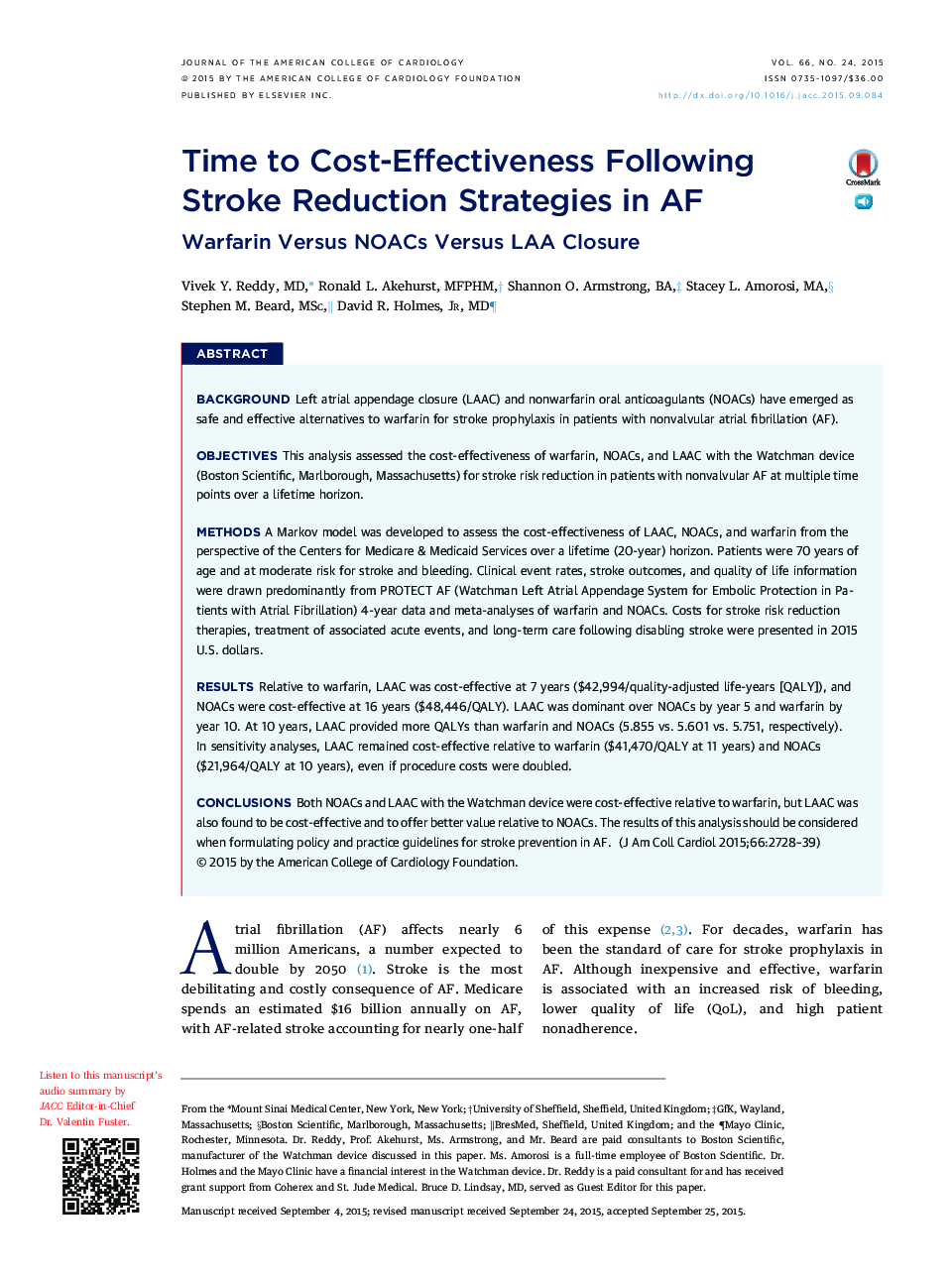| Article ID | Journal | Published Year | Pages | File Type |
|---|---|---|---|---|
| 5981951 | Journal of the American College of Cardiology | 2015 | 12 Pages |
BackgroundLeft atrial appendage closure (LAAC) and nonwarfarin oral anticoagulants (NOACs) have emerged as safe and effective alternatives to warfarin for stroke prophylaxis in patients with nonvalvular atrial fibrillation (AF).ObjectivesThis analysis assessed the cost-effectiveness of warfarin, NOACs, and LAAC with the Watchman device (Boston Scientific, Marlborough, Massachusetts) for stroke risk reduction in patients with nonvalvular AF at multiple time points over a lifetime horizon.MethodsA Markov model was developed to assess the cost-effectiveness of LAAC, NOACs, and warfarin from the perspective of the Centers for Medicare & Medicaid Services over a lifetime (20-year) horizon. Patients were 70 years of age and at moderate risk for stroke and bleeding. Clinical event rates, stroke outcomes, and quality of life information were drawn predominantly from PROTECT AF (Watchman Left Atrial Appendage System for Embolic Protection in Patients with Atrial Fibrillation) 4-year data and meta-analyses of warfarin and NOACs. Costs for stroke risk reduction therapies, treatment of associated acute events, and long-term care following disabling stroke were presented in 2015 U.S. dollars.ResultsRelative to warfarin, LAAC was cost-effective at 7 years ($42,994/quality-adjusted life-years [QALY]), and NOACs were cost-effective at 16 years ($48,446/QALY). LAAC was dominant over NOACs by year 5 and warfarin by year 10. At 10 years, LAAC provided more QALYs than warfarin and NOACs (5.855 vs. 5.601 vs. 5.751, respectively). In sensitivity analyses, LAAC remained cost-effective relative to warfarin ($41,470/QALY at 11 years) and NOACs ($21,964/QALY at 10 years), even if procedure costs were doubled.ConclusionsBoth NOACs and LAAC with the Watchman device were cost-effective relative to warfarin, but LAAC was also found to be cost-effective and to offer better value relative to NOACs. The results of this analysis should be considered when formulating policy and practice guidelines for stroke prevention in AF.
